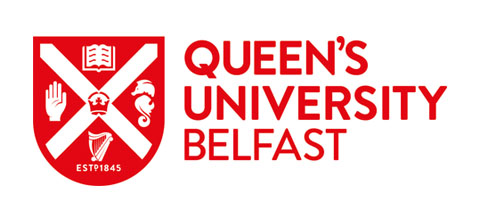Our City on Celluloid: John T. Davis
20 January 2022
As we celebrate the release of Kenneth Branagh’s Belfast at QFT, LUMI programmer Fionntán Macdonald takes a look back at the city’s storied history on the silver screen. In this article he studies two works from prolific documentarian John T. Davis.

Iconoclasts and eccentrics have always found a warm welcome in Belfast, and we have always had a voluminous library of local characters to draw on for artistic content. Something of an iconoclast himself, lauded filmmaker John T. Davis has made a career of examining such individuals and the vibrant subcultures they sprout from, allowing us to look back fondly at two of his most captivating works: Shellshock Rock (1979) and Dust on the Bible (1989).
These thought-provoking docs examine those who simultaneously alienate and affirm, the prolific filmmaker highlighting our city’s counterculture in two disparate but unified examinations of our life and history.
Davis’ legendary Northern Irish punk doc Shellshock Rock captures a moment in time that became a cultural touchstone for that generation, and an aspirational legend for those who followed. If music is the soundtrack of our lives, punk is the soundtrack of our history and here Davis dives head first into the glorious cesspool of ‘70s punk, and casts the music itself as a pivotal character. Within this, music of other genres and traditions are used as tools of contrast, and this positions punk as a corner piece of a wider puzzle.
From the opening the film is suitably anarchic, a strobe-lit youth toasting the audience before destroying the musical instruments surrounding him, yet the immediate focus is put on the unifying effect of punk music in Northern Ireland as a trio of eloquent youths introduce the punk philosophy.
“Because we’re going to be different, we’re wrong … thus the name punk rock,” one opines, for as his comrade notes, “punk is a derogatory term.” These youths, alienated by the sectarian status quo of the era, are cast as the incendiary villains to the establishment and find themselves caught in a cultural crossfire (as well as a literal one). Davis then cuts to a blistering rendition of “Alternative Ulster” almost as if this classic tune is continuing the dialogue with the disaffected youth.
This film has a lot to say and will be a nostalgic joy for punk aficionados, with local landmarks such as the old Harp Bar and Good Vibrations record store featuring the ever-eccentric Terri Hooley. The Godfather of Belfast Punk goes on to outline his grassroots musical ideology and in so doing defines the ethos of the film itself: “That’s all we wanted to do…put something down, be it only a home tape, about what was happening in Northern Ireland this year.”
It swiftly reaches its ecstatic climax with a helter-skelter montage of the faces depicted throughout, over the rapturous melody of The Undertones’ “Here Comes the Summer”, a defiant anthem of fun in the theatre of crisis.
Davis’ classic was followed ten years later by Dust on the Bible. A visual poem that captures a divisive sub-culture, this follow-up film explores Belfast’s charismatic and controversial street preachers at the height of the city’s religious conflict.
Davis makes use of voice-over here to disembody the voices of the preachers and paired with his strong use of religious imagery it produces an ethereal effect from the outset: an apt parallel with the metaphysical themes of the featured street sermons. Notably, several passages from the Book of Revelation are featured, leaving one to ponder the effect the Apocalypse Gospel had from the pulpits of a war-torn community such as Belfast.
The central figures of this documentary are certainly charismatic, dispensing dogma with authoritative dynamism. Yet Davis isolates elements of these grandiose evangelists with his camera, visually dissecting them for examination in microscopy. Their eyes are wild and their mouths discharge as much spittle as bombastic rhetoric, such that these men of God and Davis’ boisterous punks share a kinship in their fervour.
In much the same way as Shellshock Rock, Belfast is a character here as much as the individuals depicted: a silent personality with the testimony of combat writ large across her streets.
These two films form conjoined links in the chain of history, documents of a community coping in a decades long crisis: the youth with their revolutionary expression and the older generation with a retreat into established doctrine. The movement and this film are a living record of the times they were created in and remain as important cultural artefacts of our small city.
- written by LUMI programmer Fionntán Macdonald




